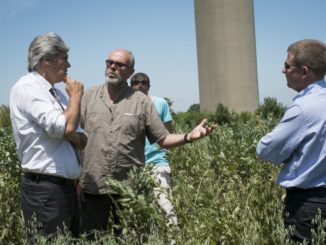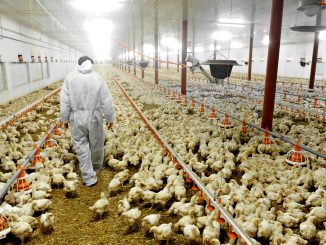By Ika Darnhofer
How can farmers, researchers and administrators work together to really preserve mountain grasslands? Here, Dr. Ika Darnhofer outlines new research on this topic.
Maintaining Mountain Grasslands
Despite well over two decades of efforts, maintaining mountain grasslands is still a challenge. In a Delphi-inquiry we asked 85 experts in Austria, France, and Norway why policies implemented so far have not been were not successful, and what approaches they would see as promising. We also wonder why these promising approaches are not implemented more widely.
Mountain grasslands are semi-natural, so they require management by farmers to be maintained. Their productivity is low, but they offer a number of services valued by society, such as a specific biodiversity, purifying water, enhancing the aesthetic value of landscapes, and offering a space for recreational activities. In an effort to avoid the abandonment of mountain grasslands, many countries have agri-environmental measures which offer payments to farmers if they keep sending cattle and/or sheep to graze the mountain pastures in the summer months.
Yet, despite efforts over the last 25 years, semi-natural mountain grasslands are still seen as threatened by abandonment and shrub encroachment.
How could mountain grassland measures be more effective?
We asked experts what changes would be needed to design more effective measures. They identified three core challenges:
(1) A broader set of stakeholders should be involved, and the local level should have more influence on the design of the measures. Indeed, in many cases how measures are designed is strongly influenced by agricultural interests, and important parts of the negotiations take place at the national level. Experts agreed that not only should the environmental associations be involved as equal partners in the design process, but also various locally relevant actors, such as NGOs, tourism associations and food businesses. The experts clearly conveyed that a more inclusive, participatory process would improve the design and implementation of measures, as the needs of different actors would be heard and taken into account. To enable the involvement of local actors, there needs to be more flexibility in how the measures can be implemented. It would enable them to be tailored to the local context, and it would contribute to the dynamism within the region, encouraging joint initiatives and building trust.
(2) Enable flexibility at the farm level. While the experts are clear that farmers should not be flexible regarding the goals to be achieved, they should be flexible how they achieve them. This would acknowledge that many management measures need to be site specific, and can thus not be reduced to standardized technical management rules. It would also highlight the importance of local, experiential knowledge. Yet, the experts pointed out that while many farmers are willing to manage mountain grasslands, this is not their primary aim. Indeed, it is important not to see farmers as ‘benevolent landscape managers’ or as ‘landscape gardeners’, but to respect their self-identity as food producers. Giving farmers more flexibility would help overcome a wide-spread sense of frustration and ‘de-responsibilisation’, as many farmers feel that measures are too prescriptive: they feel that they lack autonomy in how to manage their grasslands. While farmers appreciate many traditional management practices, they do not want to live in a ‘reservation’ or practice ‘museum agriculture’. The aim of increasing flexibility is thus to reground farming practices in regional specificities, and to motivate farmers by revaluing their competences and their local knowledge.
(3) Reconceptualise monitoring as part of a social learning process. If the measures are designed adequately, and farmers are given appropriate training and support, farmers could and should become actively engaged in monitoring the success of the measures. Ideally, involving farmers in monitoring can promote social learning, e.g. through joint visits of plots, discussing the effectiveness of the implemented management practices, and jointly exploring possible adaptations. The aim would be to develop monitoring into a dynamic where farmers as a group take responsibility for outcomes, based on mutual feedback and shared learning.
What are the current best practices?
When asked what they perceived as ‘best practices’, experts highlighted three types of measures:
(1) Measures that are based on individualized management plans, i.e. where farmers and an agent of the environmental administration negotiate a contract. This may be done for an individual plot or for a territory. As negotiations can be challenging for individual farmers, collective approaches might be suitable. In the Netherlands collective management plans are negotiated by ‘local environmental cooperatives’ (see e.g. this paper ).
(2) Measures based on outcomes, where farmers need to achieve a pre-specified outcome, but can freely choose which management practice works best on their farm. An example of such an approach are the ‘prairies fleuries’ (flowering meadows) in France (see e.g. Concours des Prairies Fleuries).
Concours des Prairies Fleuries features in ARC2020’s Transitioning Towards Agroecology publication (available in six languages)
(3) Open-ended processes based on collaborative learning, which might be the most challenging approach. The example provided by the experts is the ‘alpages sentinelles’ initiative. In this initiative farmers, herders, researchers (agronomists, ecologists and meteorologists) and officers from a national park are engaged in an open-ended learning process about the impact of climate change on the grassland, and how grazing practices could be adapted.

Why are these practices not more wide-spread?
Given that the ‘best practices’ identified by the experts are already being implemented and have shown that they work, we asked ourselves: why are these practices not more wide-spread?
- Policy makers’ focus and processes need to change. We noted that these ‘best practices’ build on radically different assumptions, which are not compatible with the dominant beliefs that guide policy makers. Indeed, it requires a radical shift in how efficiency is defined. This would mean a shift from efficiency in implementation, i.e. keeping the administrative cost of implementation and monitoring/control low; towards efficiency in designing social learning processes. The administrative processes would also need to change radically, from focusing on efficiency, calculability, predictability and control; towards processes focusing on reflection, learning and inclusivity. Evaluation thus needs to go beyond monitoring of biophysical indicators and reducing transaction cost, to include social and procedural aspects, based on a comprehensive iterative learning cycle.
- View farmers as active participants. The best practices also require a radical shift in how farmers are seen. Farmers would no longer be seen as passive recipients of measures designed and specified by others, but as active participants in a joint process of defining the practices that are both feasible and effective in their specific context. This would make farmers feel competent and respect their need for autonomy, while also promoting relatedness, i.e. a sense of belonging to a group that values collective goals.
- From inputs to iterations – researchers as part of a process. It also requires a radical shift in how researchers are seen. Researchers would no longer be seen as providing input before and after program implementation (e.g. in ex-ante and ex-post evaluations of measures), but as engaging in a transdisciplinary and iterative mode of inquiry, as part of a broader social learning process. This is also built on a radical shift away from seeing scientific knowledge as objective, reliable and authoritative, towards acknowledging that it is preliminary, tentative and uncertain.
If summer grazing on alpine pastures is to be maintained, we need to go beyond incremental adaptions of current measures, towards a radical departure from dominant assumptions of how the ‘efficiency’ of measures is assessed, of the administrative process in implementation, of the role of farmers, and of the role of researchers and scientific knowledge. Unless we are willing to question these assumptions and to redefine roles, it is unlikely that future measures to maintain mountain grasslands will be more successful than those implemented in the past. This is highly unfortunate, as several ‘best practices’ show how alternatives may look like and that they can be successful.

For more information:
Darnhofer, I., M. Schermer, M. Steinbacher, M. Gabillet and K. Daugstad (2017). Preserving permanent mountain grasslands in Western Europe: Why are promising approaches not implemented more widely? Land Use Policy 68: 306-315. NEW: Link to full paper.
 Ika Darnhofer is associate professor at the Institute of Agricultural and Forestry Economics at the University of Natural Resources and Applied Life Sciences in Vienna (Austria). Her research focuses on management and decision making on family farms, not least linked to resilience of farms. Taking a qualitative approach, she explores issues linked to farming values, autonomy and adaptability. The focus on resilience is strengthened by the recognition that we live in turbulent times. Family farms thus need a high level of adaptive capacity to cope with rapid and often unpredictable change as well as with the ambiguity and contradictions in consumer’s demands. She is member of the executive committee of the International Farming Systems Association (IFSA), and a member of the editorial board of the ‚Journal of Rural Studies’, of ‘Agricultural Systems’ and of ‚Agriculture and Human Values’.
Ika Darnhofer is associate professor at the Institute of Agricultural and Forestry Economics at the University of Natural Resources and Applied Life Sciences in Vienna (Austria). Her research focuses on management and decision making on family farms, not least linked to resilience of farms. Taking a qualitative approach, she explores issues linked to farming values, autonomy and adaptability. The focus on resilience is strengthened by the recognition that we live in turbulent times. Family farms thus need a high level of adaptive capacity to cope with rapid and often unpredictable change as well as with the ambiguity and contradictions in consumer’s demands. She is member of the executive committee of the International Farming Systems Association (IFSA), and a member of the editorial board of the ‚Journal of Rural Studies’, of ‘Agricultural Systems’ and of ‚Agriculture and Human Values’.








